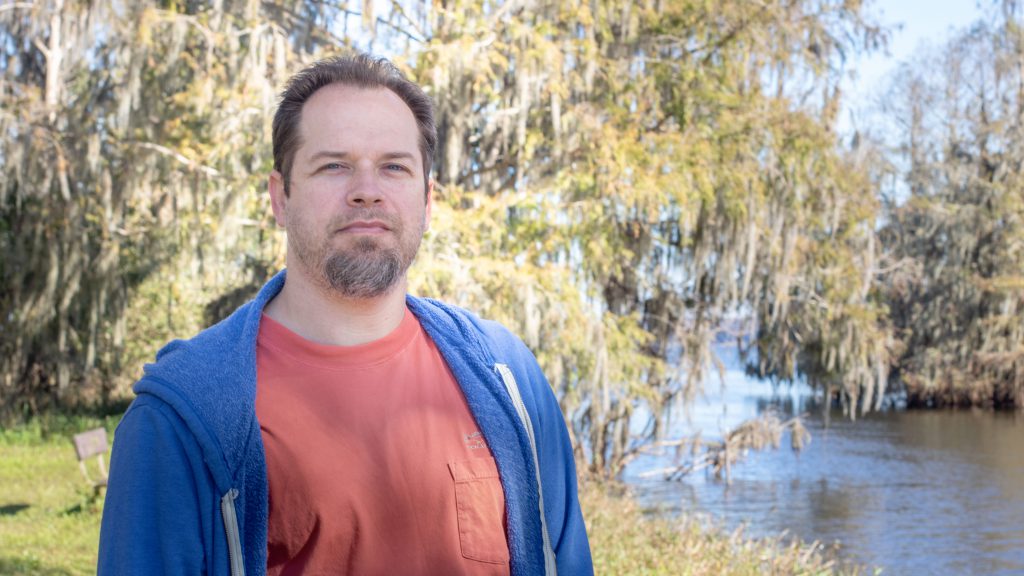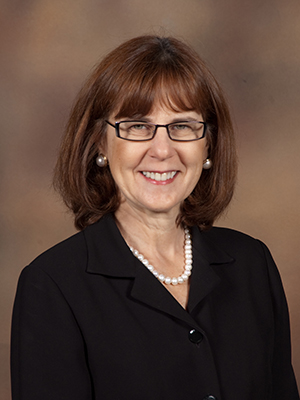The trash we discard at the landfill doesn’t disappear. It can come back to us as toxic chemicals.
By Marlowe Starling | Feb. 8, 2021
When we throw something away, it becomes trash. The trash goes into a bin. The bin empties into a truck. The truck rumbles away to a landfill. No longer our problem, right?
Well, not exactly.
Landfills contain a mix of different types of trash, from discarded food waste to plastics, fabrics and paper products. Certain items—nonstick cookware, water-resistant clothing, fast-food packaging—contain chemicals that won’t break down. Mixed with rain, they become toxic substances that can contaminate waters and soils.
Thousands of human-made chemicals known collectively as PFAS—per- and polyfluoroalkyl substances—are being found in our water, in our bodies and in the environment. These ubiquitous “forever chemicals” are linked to birth defects, a variety of cancers, reduced fertility and decreased response to vaccines.
The U.S. Environmental Protection Agency (EPA) has set a safe drinking water standard for PFAS contamination at 70 parts per trillion: an upper limit highly contested by activists and scientists alike, such as the Environmental Working Group, which argues the only safe amount of contamination in drinking water is less than one part per trillion.
One part per trillion, for reference, is one drop in 10 million gallons, says Frank Cassou, CEO and co-founder of the water purification company Cyclopure seeking ways to remove PFAS from drinking water.
The presence of PFAS is better known in products such as firefighting foam and nonstick pans, but lesser known in everyday items like dental floss, outdoor gear and some cosmetics. When they are dumped or incinerated, the chemicals escape into the environment.
Efforts to contain them, centered largely on drinking-water standards, lag far behind what is known about their health impacts. And landfills play an important yet little-known role.
In the harsh environment of landfills, trash undergoes chemical processes, and inevitably, the PFAS escapes. Rain trickles down through the waste, allowing chemicals to seep out in a brew of “garbage juice” called leachate. What we thought we threw away can come back to us: through our water, food and even the air.

“Everything we use, it gets tossed into a landfill. It’s the amalgamation of everything, known and unknown.”
–UF chemistry professor John Bowden
Why landfills matter
Solid waste facilities in Florida are often located near waterways and surrounded with wildlife, said John Bowden, an environmental chemist researching PFAS at the University of Florida.
Landfills are more than a heap of trash: They’re pressurized, highly heated, covered with soil and full of bacteria breaking down organic materials, Bowden said, creating this “garbage juice.” The coffee-colored liquid can carry remnants of metals and chemicals like PFAS from our disintegrating stuff.
“Everything we use, it gets tossed into a landfill,” Bowden said. “It’s the amalgamation of everything, known and unknown.”
In addition to the nearly 7,000 different types of synthetic PFAS compounds known to science, Bowden added that other chemicals can be created from a landfill’s biological and chemical reactions.
“It’s not just measuring the chemicals, but it’s also potential byproducts that could be produced that we don’t know anything about,” he said.
PFAS can escape our waste stream a number of ways. If leachate seeps out and into the soil in the absence of landfill liners, it can trickle down to the Floridan Aquifer, the source of drinking water for 90% of Floridians.
Sewage also makes its way to landfills. Euphemistically called “biosolids,” dried, treated sewage is often made into fertilizer, about 60% of which is spread on crops nationwide, according to the EPA. PFAS can then wind up in our food, either through the food itself or from food packaging, the agency has reported. The EPA identified dozens of other hazardous contaminants in biosolids as well, including PFAS, that are applied to crops or livestock feed.
Other waste is incinerated. Burning trash and sewage sludge that contain PFAS releases the chemicals into the air in the form of toxic ash, which can travel up to several miles away and contaminate nearby water and soil, the Environmental Working Group’s Science Investigations Team reports. In 2018, 10% of the more than 47 million tons of municipal solid waste collected in Florida was burned, according to state Department of Environmental Protection (DEP) data.
A history of dumping
The problem of getting rid of trash is not new. But it has become both more complicated, with 8 billion people on the planet, and more technologically advanced.
Forever chemicals have been made since the 1940s, although we didn’t know their danger at the time. Old landfills without proper lining and open dumps silently fouled groundwater and surface waters with pollutants for years. It wasn’t until the federal Resource Conservation and Recovery Act in 1976 that Congress enacted stronger regulations for solid and hazardous waste, said Debra Reinhart, an environmental engineer and expert in solid and hazardous waste management.
Now, high-quality liners are required for landfills, Reinhart said. Whether they can safely contain PFAS is the focus of EPA-funded research now underway.
“I think in general people don’t know what happens to their waste after they put it in the garbage can,” she said. “They might know about landfills if they pass one and smell it, but I think there’s a lot of misunderstanding.”
DEP data show that Florida sent more than 22.6 million tons of trash to the landfills in 2019 alone.
More than 60% of active landfills in the U.S. treat leachate in wastewater plants, and some states require it, though Florida is not among them. Still, Reinhart added, there aren’t any easy or cost-effective ways to destroy PFAS.
“Unfortunately, it just sort of transfers it around,” she said. “In some cases, PFAS ends up in the biosolids, and ironically, biosolids are frequently put back into a landfill.”
A former landfill in New York, now a federally designated Superfund site to clean up hazardous waste, was found to have levels of PFOA (a type of PFAS) up to 350 times the federal drinking water standard in its water. The Hoosick Falls landfill was an early indicator to residents in nearby Merrimack, New Hampshire, that solid waste played a role in making their water toxic.

“I think in general people don’t know what happens to their waste after they put it in the garbage can.”
–Florida environmental engineer and hazardous waste expert Debra Reinhart
“It’s all connected.”
New Hampshire social worker Laurene Allen lies awake at night, when it’s too late to call anyone, thinking about forever chemicals.
Allen, a founding member of the National PFAS Contamination Coalition, barely knew about PFAS before March 2016. That was when residents of Merrimack were told their water was contaminated with PFOA and PFOS, two of the most commonly found and heavily studied compounds.
Many of them rely on private wells for their drinking water, sourced from groundwater beneath the Merrimack River, which carries the invisible, odorless chemicals suspected of causing illness and cancers in the community. The hardest part, Allen said, was getting someone to claim responsibility.
Upstream of her neighborhood, the Saint-Gobain Performance Plastics facility was dumping waste at nearby landfills, releasing wastewater into the river and emitting fumes, all with high levels of PFAS. The facility continues to pose concerns about the viability of their groundwater.
“Nobody at that point was looking at waste disposal,” she said. “Nobody was thinking about what happens when you have whatever’s left over and what you do with this toxic waste.”
She knew that frying pans were bad. Teflon, a brand-name coating used on nonstick cookware containing PFAS, and chemical manufacturer DuPont came under intense scrutiny for polluting the water in areas near its production facilities, as dramatically reenacted in the 2019 film “Dark Waters” starring Mark Ruffalo.
But she didn’t know until later that common household items such as carpeting, 3M products like Scotchgard, stain-resistant furniture, car seats, fast-food packaging, pizza boxes and microwave popcorn bags also contain the lethal chemicals that easily leach into water.
“We didn’t know at that point that we had so much PFAS in so many products,” she said. “The landfill issue is massive.”
Then, she realized: When our trash disappears from our homes, the chemicals do not.
“It’s this big issue over what are we going to do with what we don’t want—what we need to dispose of,” Allen said. “PFAS brings a new meaning to that discussion because of the forever bonds of it not breaking down and it continuing to leach and continuing to contaminate.”
Allen faces a prolonged battle against Saint-Gobain’s chemical dumping in rivers, landfills and wastewater plants. As she learned more about the widespread pollution, one thing became clear: “It’s all connected.”
“Do the right thing,” Allen said. “Stop the source…Use the hazardous substance designation, and clean this up. It’s a crisis.”
Solutions, clear and frothy
While governments at all levels have been slow to tighten regulations and crack down on major polluters, one well-known company has taken a stand against forever chemicals.
In early December, Amazon announced it would ban PFAS from its Amazon brand kitchen products.
“It’s good news that Amazon is moving to ban the use of PFAS in food packaging and other household products,” said Scott Faber, Environmental Working Group senior vice president for government affairs, in a press release. “It’s critically important that we eliminate nonessential uses of PFAS in household products.”
Florida’s environmental regulators are working on solutions, too.
The DEP recently initiated a waste cleanup program designed to monitor PFAS contamination at 27 sites statewide, including six landfills.
DEP is analyzing sites with high PFOA and PFOS concentrations “to determine the probable source of contamination, evaluate the environmental impacts, and develop cleanup plans to reduce the potential risk of exposure to human health and the environment,” according to the department’s website.
“The first phase of this was to see what was out there, to try to get a better picture of the problem,” said Kerry Tate, environmental administrator for DEP’s chemistry program.
The next phase will tackle cleanup, he said, with some hotspots requiring more immediate action. The department is looking at hundreds of private wells near the sites, Tate said. If they exceed even half the health advisory limit set by the government, DEP will alert the state’s Department of Health to assess cleanup options. The department analyzes samples for 30 PFAS compounds.
The DEP has also released a plan to further investigate PFAS in solid waste and the environment. It identifies 64 sites with soil and groundwater contamination. Two of the most notorious compounds found—PFOS and PFOA—are no longer manufactured in the U.S., a testament to their persistence.
Bowden and UF colleagues published a study in August explaining a technique using foam to remove PFAS from landfill leachate. By mixing air into the garbage juice and creating a foam highly concentrated with PFAS compounds, they devised a way to separate out the chemicals.
“You can take large quantities of leachate, and if you collect the foam, once that foam reduces down to a liquid, then you basically size-reduced the amount of material that you need to destroy,” Bowden said.
The method could also work at wastewater treatment plants where leachate often ends up. Most facilities can’t filter PFAS with existing technology. The foaming technique offers a new alternative to simply moving the chemicals from one place to the next.
But the ultimate solution may come down to putting fewer chemical-derived products out into the world.
“We really have to ask ourselves, should we even be making them to begin with?” said DEP’s Tate. “If you don’t make it, then you don’t have to get rid of it.”
Read Next: When Protection is the Danger
 Forever in Florida
Forever in Florida